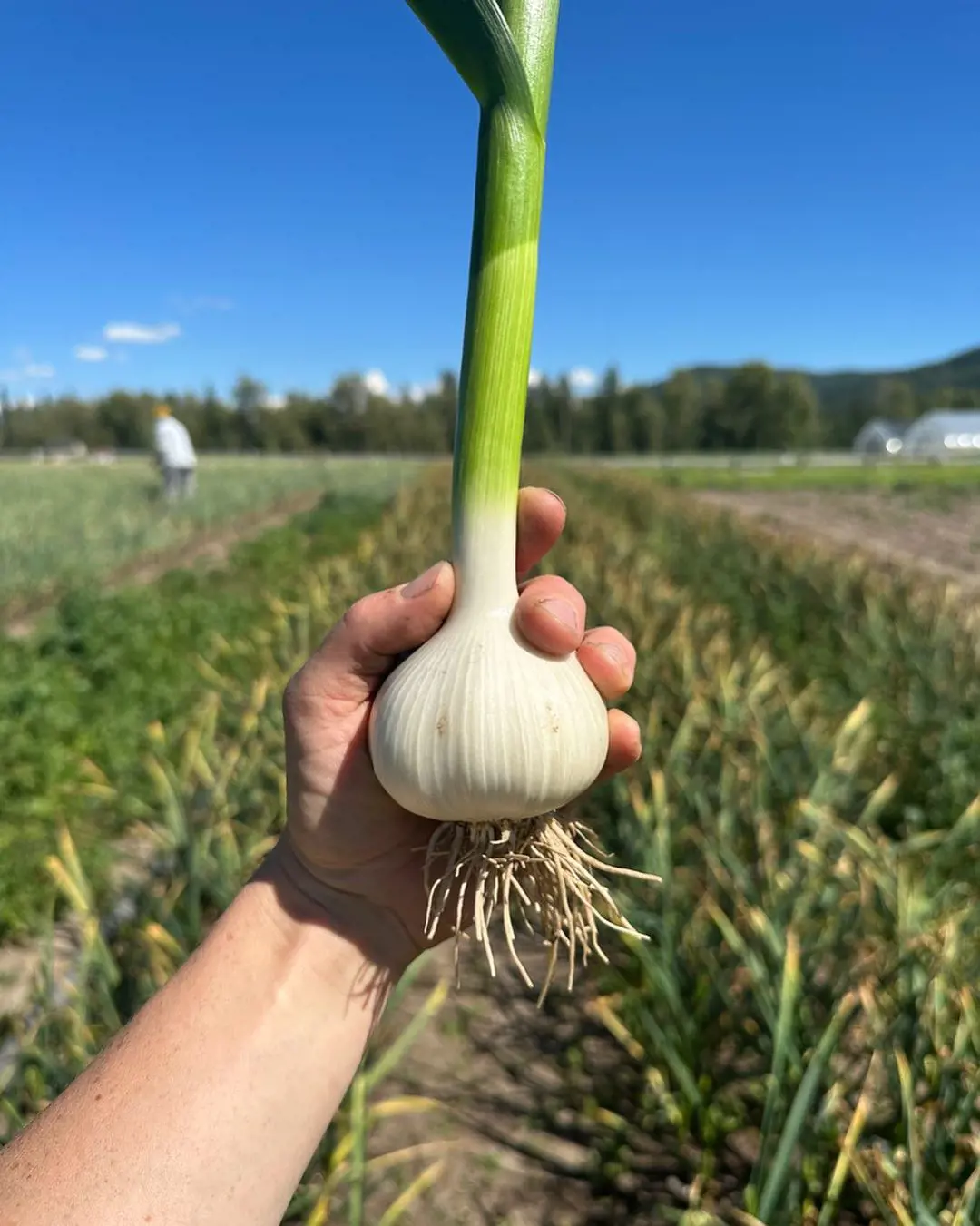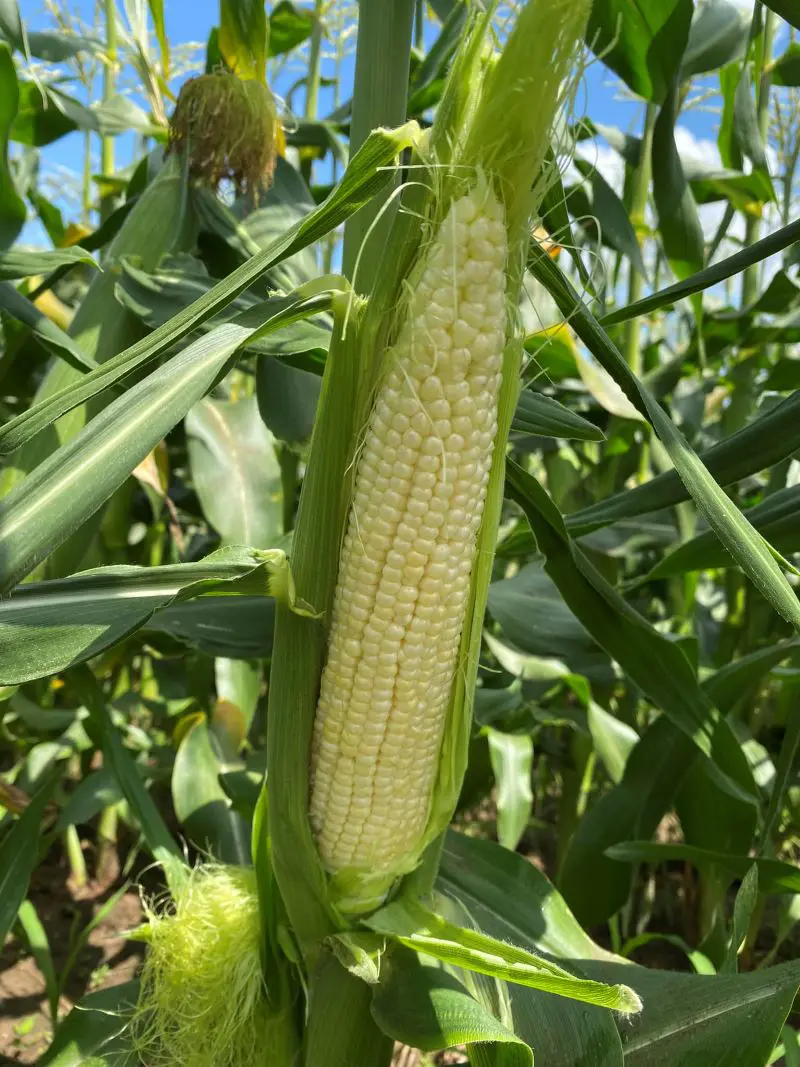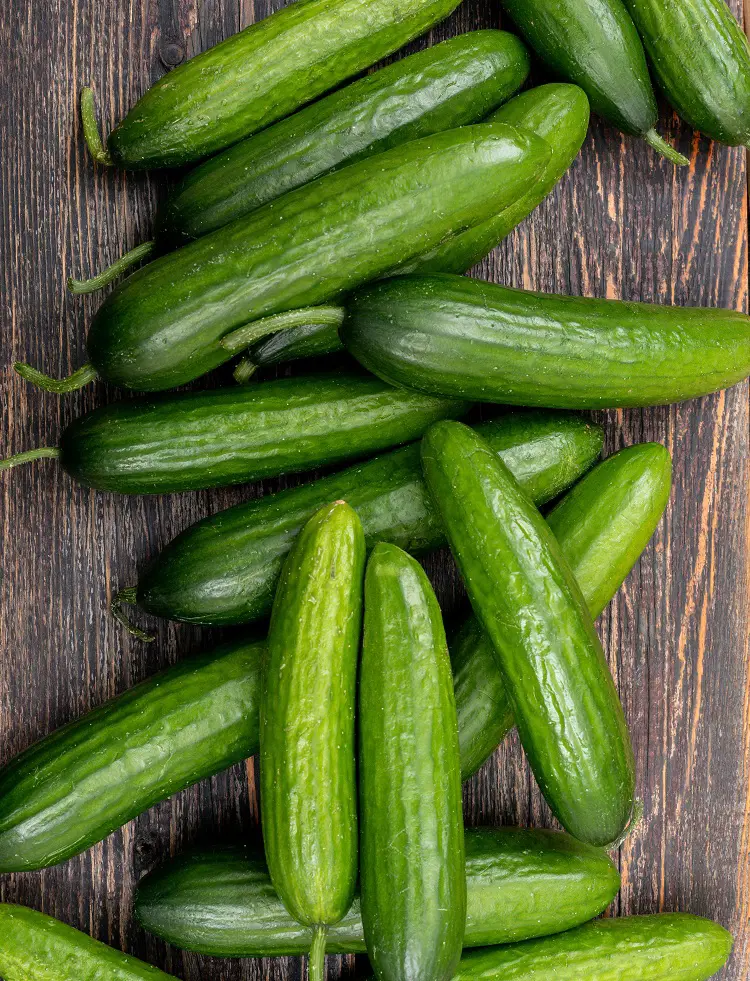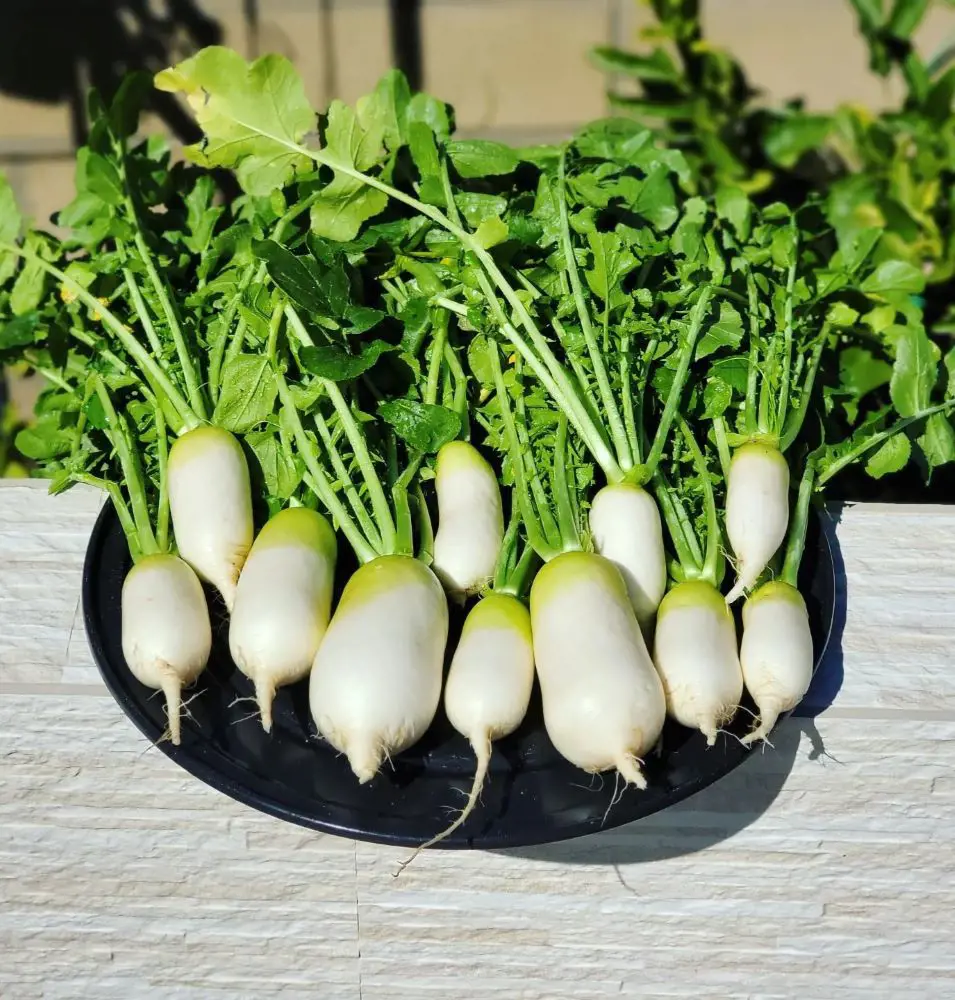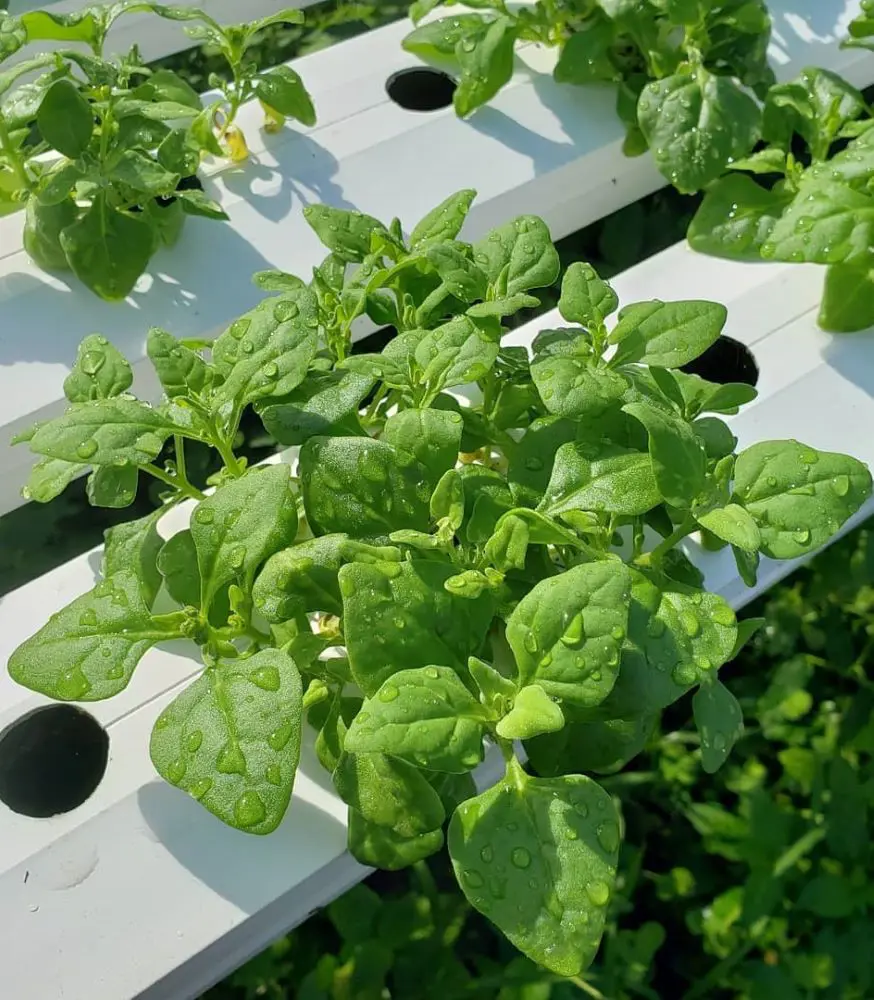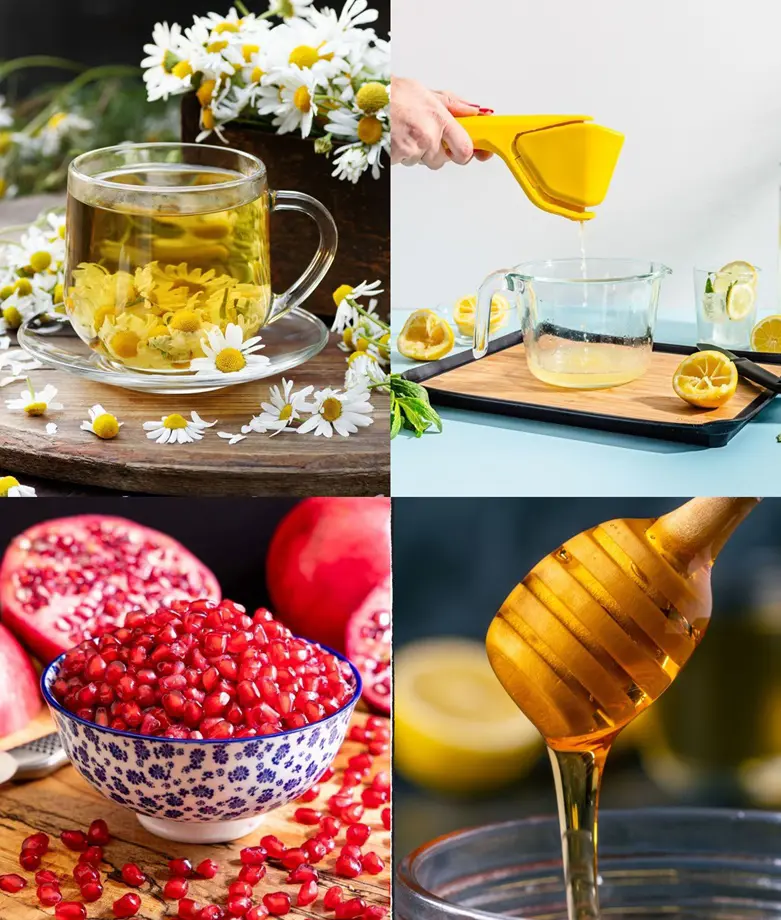How To Plant, Grow And Care Asparagus In Your Backyard
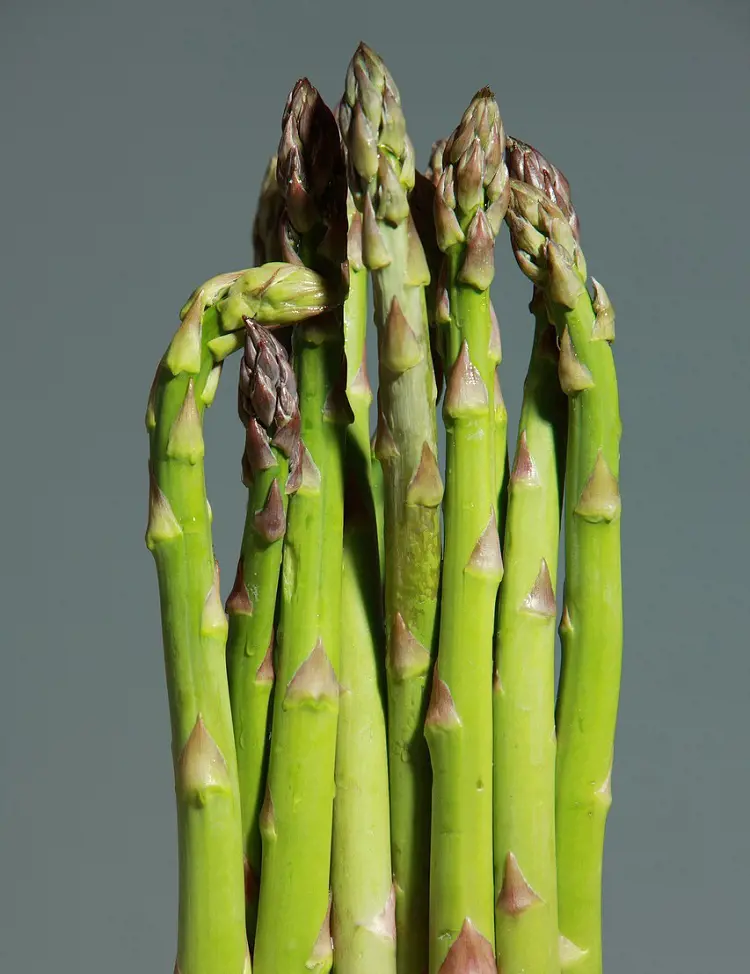
This post may contain affiliate links. If you make a purchase through links on our site, we may earn a commission.
People love asparagus in spring and summer because it's one of the first veggies to pop up, and the fresh spears taste amazing.
Besides being tasty, it's super healthy, loaded with vitamin B, vitamin C, calcium, and iron. Growing asparagus might sound tricky, but it's a great choice for beginners.
These plants keep giving you fresh spears each year without needing much space or effort. Yes, it takes about three years for them to fully grow, but trust me, the wait is worth it when you have lots of nutritious asparagus to enjoy.
Facts About Asparagus

Asparagus is a green, spear-like vegetable harvested from the young shoots of the Asparagus officinalis plant. As a perennial vegetable, asparagus plants produce fresh spears each spring and summer, making it a valuable and rewarding choice for home gardeners.
- Common Name: Asparagus
- Botanical Name: Asparagus officinalis
- Family: Asparagaceae
- Plant Type: Perennial, vegetable
- Mature Size: 4 ft. tall, 2 ft. wide
- Sun Exposure: Full sun
- Soil Type: Sandy, loamy
- Soil pH: Neutral, acidic
- Bloom Time: Summer, fall
- Flower Color: Yellow, green
- Hardiness Zones: 3-10 (USDA)
- Native Area: Europe, Africa
- Toxicity: Berries toxic to humans
Should You Plant Asparagus Crowns or Seeds?

The decision to plant asparagus crowns or seeds depends on your patience and time investment. Planting crowns is the faster route, as they are one-year-old asparagus plants. You can expect to harvest spears in about two years. On the other hand, starting from seeds requires more time and care, taking up to three years before the first harvest.
While seeds offer a wider variety of asparagus types, crowns are often preferred by beginners due to their simplicity. Ultimately, if you seek immediate gratification, go for crowns; if you're in for a more extended gardening journey and enjoy the variety, seeds might be the choice for you.
How Long Does It Take Asparagus To Grow?
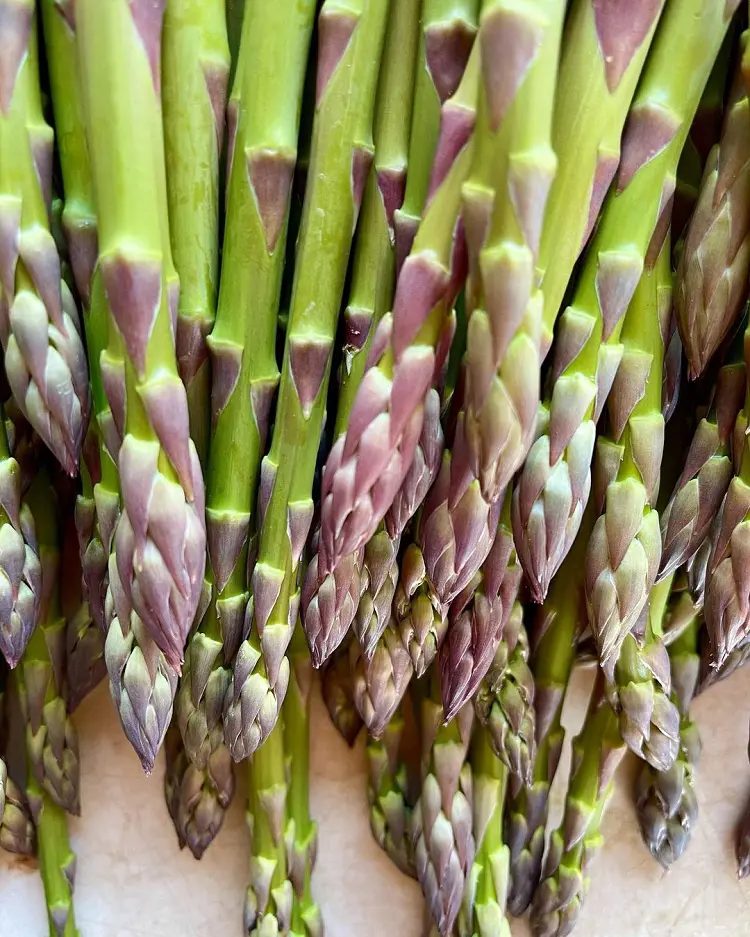
Growing asparagus is a lesson in patience, as it takes time for the plants to establish and produce a bountiful harvest. When grown from crowns (one-year-old plants), you can typically expect to see the first harvest of asparagus spears in about two years from planting.
However, it's advisable to resist the temptation to harvest during the first year to allow the plants to develop a robust root system. If you opt to grow asparagus from seeds, the process is more extended, with the first harvest usually occurring after approximately three years.
Asparagus Varieties
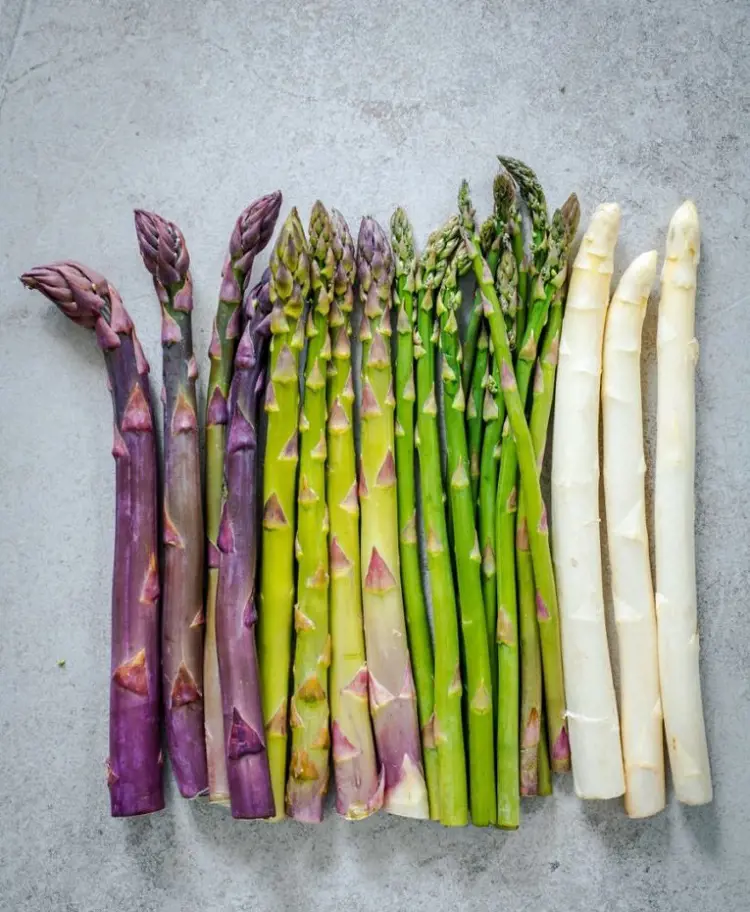
Some popular varieties of asparagus include:
Mary Washington
- Description: A classic and widely grown variety with green spears.
- Characteristics: Hardy and well-suited for various climates.
Purple Passion
- Description: Known for its vibrant purple color.
- Characteristics: Sweeter tastes and is high in antioxidants.
Jersey Giant
- Description: Produces thick, green spears.
- Characteristics: Vigorous growth, well-adapted to different soils.
UC-157 F1
- Description: A hybrid variety with uniform, long spears.
- Characteristics: High yield and disease resistance.
Apollo
- Description: Early-maturing variety with green spears.
- Characteristics: Well adapted to colder climates.
Gijnlim
- Description: Dutch variety known for its high yield.
- Characteristics: Resistant to rust and fusarium.
Connover's Colossal
- Description: Traditional green asparagus variety.
- Characteristics: Reliable and well-established.
Pacific Purple
- Description: Purple variety with a sweet flavor.
- Characteristics: High in anthocyanins and visually appealing.
Now, let's get to know the right way to grow asparagus in your garden:
1. Choose The Right Variety
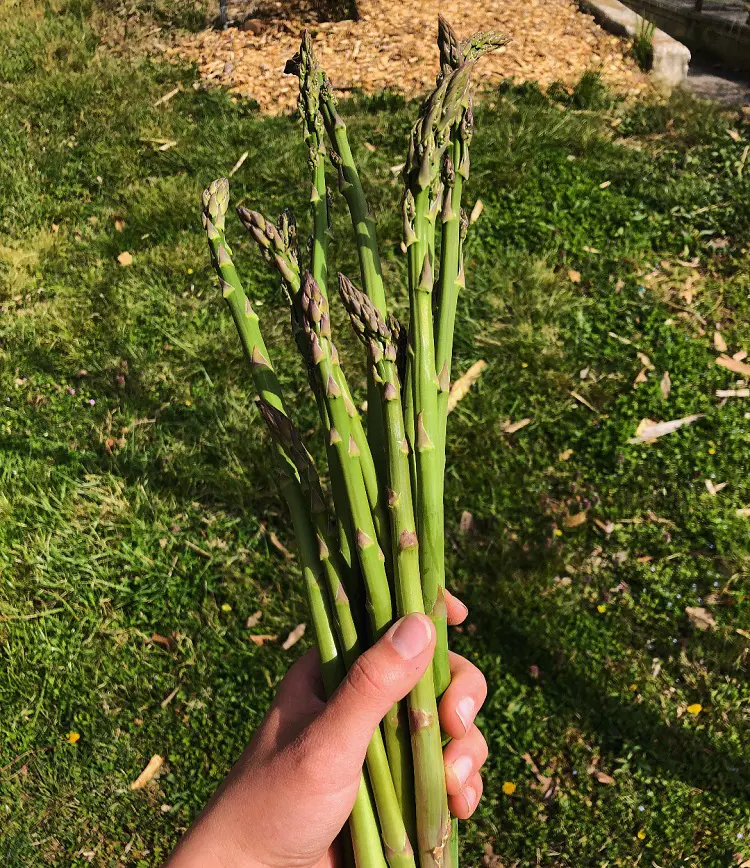
When choosing an asparagus variety, consider your climate for optimal growth. Different varieties thrive in specific conditions, ensuring a successful harvest. Mary Washington, a classic choice, adapts well to various climates, providing reliable yields. Purple Passion, with its vibrant hue, adds a touch of novelty and is particularly suited for those seeking antioxidant-rich spears.
Jersey Giant, known for its thick, green spears, is a robust option, flourishing in diverse soil types. Tailoring your asparagus selection to your climate ensures the plants receive the ideal conditions for growth, leading to a flourishing and bountiful harvest of this nutritious and delectable vegetable.
2. Select A Suitable Location
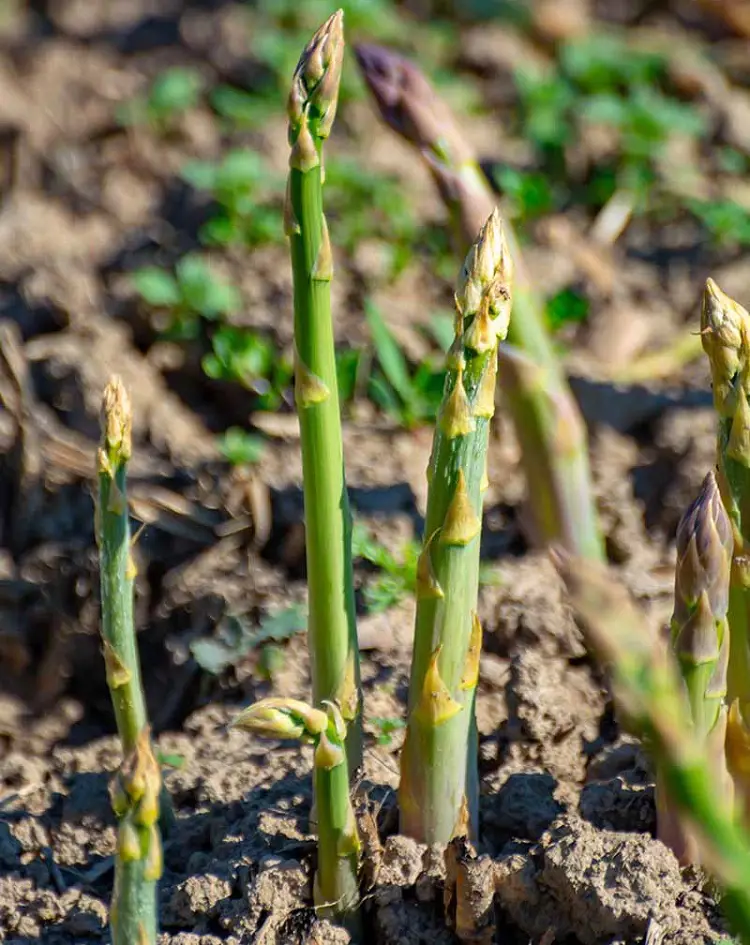
For a thriving asparagus bed, carefully choose the right location. Optimal conditions include well-drained soil within a slightly acidic to neutral pH range of 6.0 to 7.0. Asparagus roots are susceptible to waterlogging, emphasizing the importance of well-draining soil.
Select a sunny site, as asparagus plants flourish in full sun exposure, ensuring they receive the necessary light for photosynthesis and robust growth. Additionally, prioritize good air circulation to minimize the risk of fungal diseases. By providing these key environmental factors, you create an ideal setting for asparagus to establish a healthy root system and yield abundant, flavorful spears in the seasons to come.
3. Prepare The Soil

Asparagus plants thrive in well-draining soil that is also rich in organic matter. The inclusion of compost or well-rotted manure during soil preparation enhances fertility, providing essential nutrients for robust growth. Well-draining soil prevents waterlogging, safeguarding the asparagus roots from potential damage.
The organic amendments contribute to soil structure and microbial activity, promoting a healthy and nutrient-rich foundation for the asparagus plants. This preparatory step ensures that the soil not only supports initial growth but sustains the long-term development of a productive and flourishing asparagus bed.
4. Planting Asparagus Crowns

Optimal planting of asparagus crowns involves early spring placement. Create a trench measuring 12-18 inches in depth, providing ample space for the crowns to develop. This method allows for proper burial, promoting healthy root growth and establishing a robust foundation.
Ensure a 12-18-inch spacing between the crowns within the trench, preventing overcrowding and enabling each plant to access sufficient nutrients and sunlight. By adhering to these guidelines during the early spring planting, you set the stage for a successful and productive asparagus bed, ultimately yielding delicious and nutritious spears in the future.
5. Spacing And Depth

Careful spacing and planting depth are crucial for asparagus success. When placing crowns in the trench, ensure the buds face upward, facilitating proper shoot development. Cover the crowns with a 2-inch layer of soil initially, allowing shoots to emerge.
As the asparagus grows, gradually fills in the trench, supporting the emerging shoots and providing additional soil for root development. This step-by-step approach ensures that the asparagus crowns are appropriately buried and allows for a gradual adjustment to soil levels, promoting healthy shoot growth and establishing a flourishing asparagus bed over time.
6. Watering
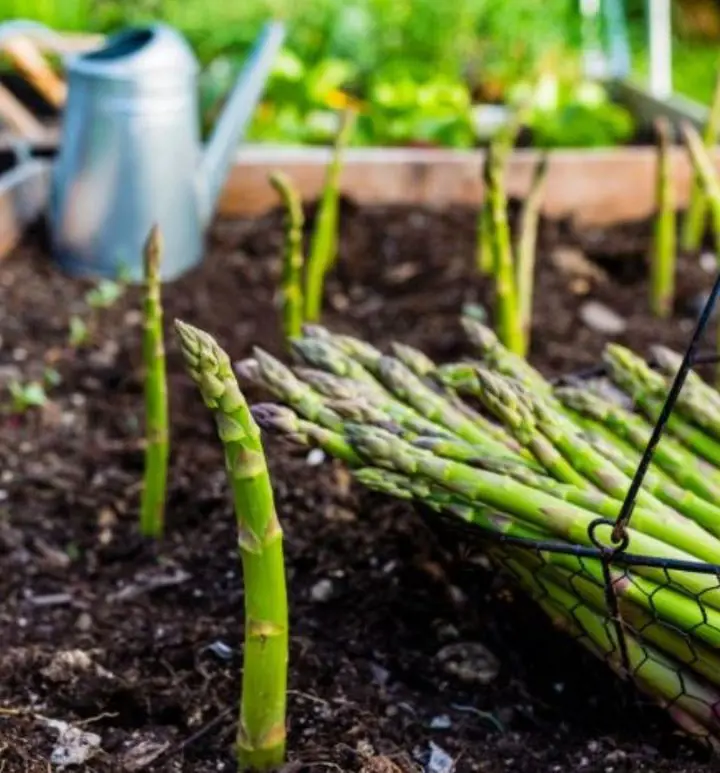
Maintaining optimal soil moisture is essential for asparagus, especially in its initial two years. Keep the soil consistently moist, ensuring a well-hydrated environment for root development. However, caution must be exercised to avoid waterlogging, as asparagus roots are susceptible to stress under excess water.
Striking a balance is crucial – providing enough moisture to sustain growth without causing water stress. This delicate approach to watering supports the establishment of a healthy root system, setting the stage for robust asparagus plants that will yield plentiful and flavorful spears.
7. Mulching
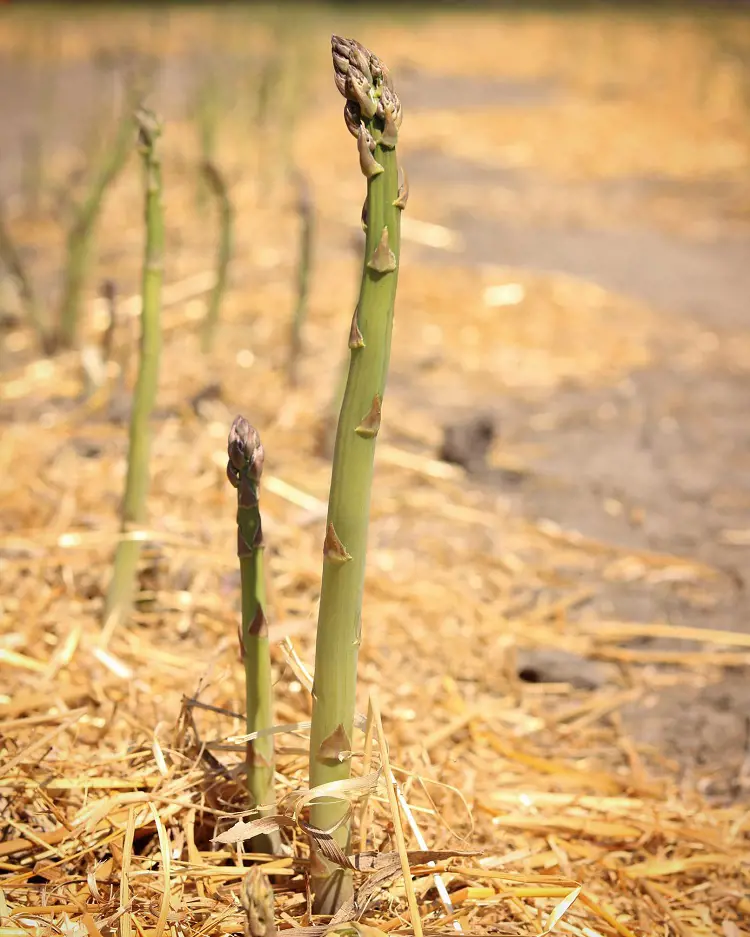
Mulching is a key practice to enhance asparagus growth. By applying a layer of mulch around the plants, moisture retention is improved, reducing the frequency of watering. Additionally, the mulch acts as a barrier, suppressing weed growth, which can otherwise compete for nutrients.
Moreover, it aids in regulating soil temperature, providing a more stable and conducive environment for asparagus roots. This protective layer ensures that the soil remains consistently moist, weed-free, and at an optimal temperature, contributing to the overall health and productivity of the asparagus bed.
8. Fertilization

Ensuring the robust growth of asparagus involves timely and balanced fertilization. In spring, apply a well-rounded fertilizer with equal proportions of nitrogen, phosphorus, and potassium.
This balanced nutrient composition supports various aspects of asparagus development, from healthy foliage (nitrogen) to strong root systems (phosphorus) and overall plant vigor (potassium). This strategic fertilization not only encourages optimal growth but also contributes to the plant's ability to produce abundant and nutritious spears.
9. Weed Control
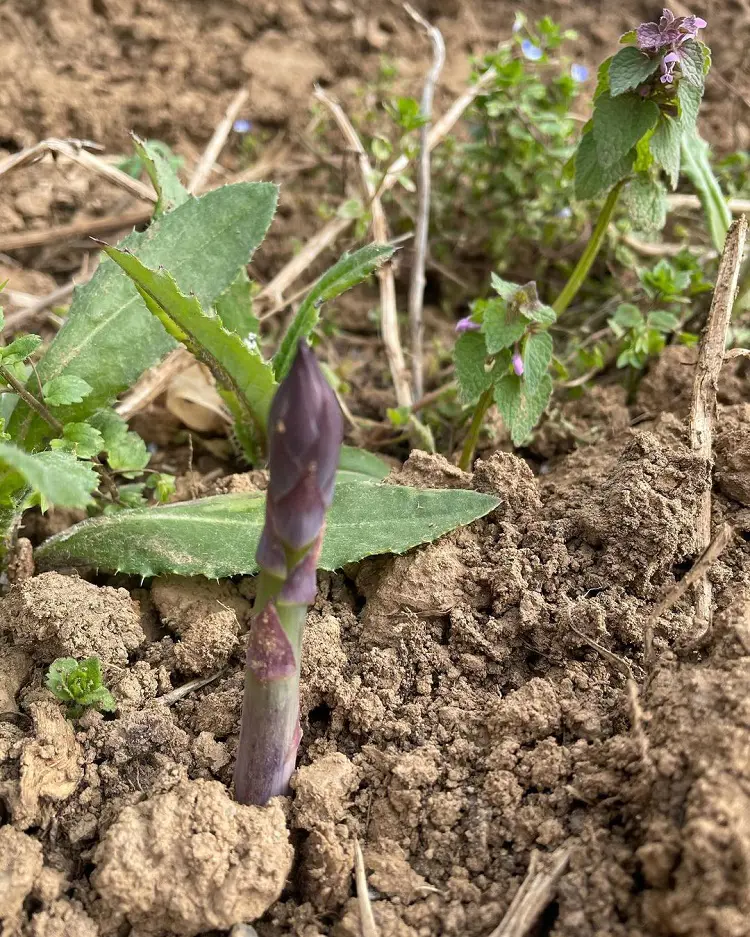
Maintaining a weed-free zone around asparagus plants is essential for their thriving growth. Weeds pose a threat by competing with asparagus for vital resources such as nutrients and water. Eliminating these competitors ensures that the asparagus plants receive the full benefit of fertilization and irrigation, promoting their overall health and productivity.
A weed-free environment minimizes the risk of nutrient depletion, allowing the asparagus to develop a strong root system and produce plentiful, high-quality spears. Regular weeding is a simple yet effective measure to safeguard the flourishing of your asparagus bed.
10. Protecting Young Shoots
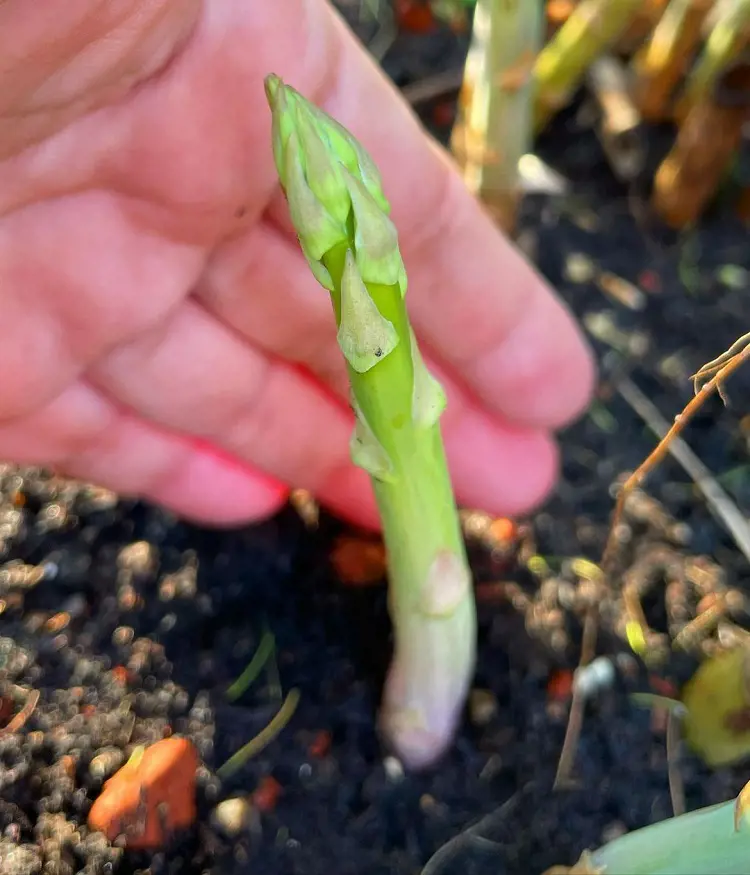
Shielding emerging asparagus shoots from spring frosts is crucial for a successful harvest. When shoots begin to appear, cover them with a layer of straw or a specialized frost cloth. This protective barrier serves as insulation, preventing frost damage and ensuring the delicate shoots can develop without harm.
By safeguarding the young asparagus from frost, you promote a healthy start to the growing season, setting the stage for robust plants that will produce abundant and flavorful spears throughout the harvesting period. This precautionary step is particularly vital in regions prone to late spring frosts.
11. Allow For Fern Growth
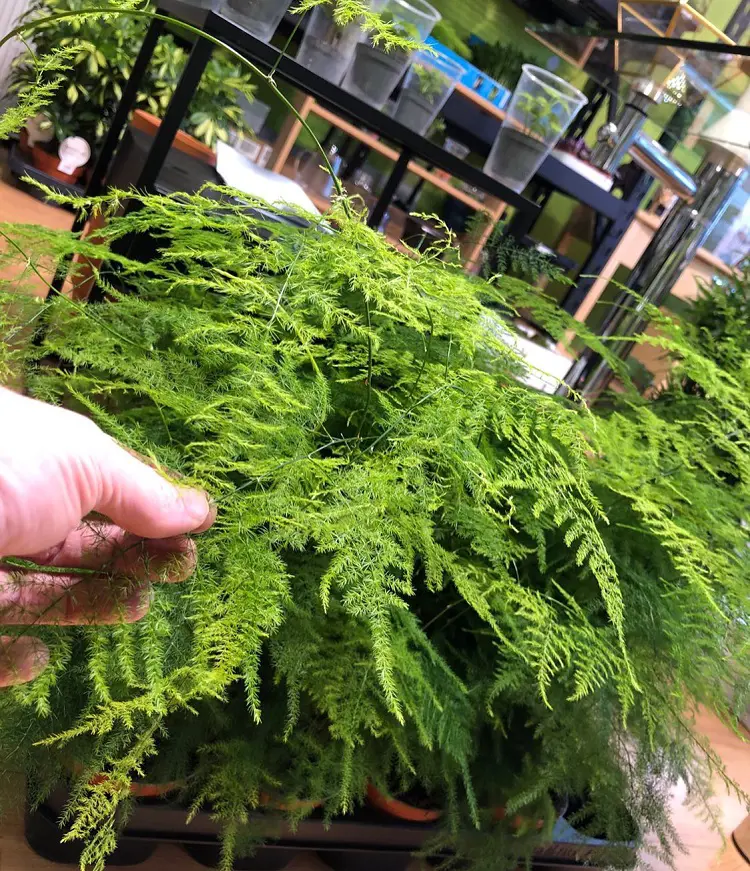
During the initial two years of asparagus growth, refrain from harvesting the emerging ferns. Allowing these ferns to grow undisturbed is a strategic approach to fortify the plant's root system. The energy accumulated through fern growth contributes to a robust and extensive root network, establishing a foundation for future productivity.
While it may be tempting to harvest, exercising patience in these early years ensures the asparagus plants focus on building strength below the surface, ensuring a healthier and more prolific crop of edible spears in the subsequent years of cultivation.
12. Harvesting
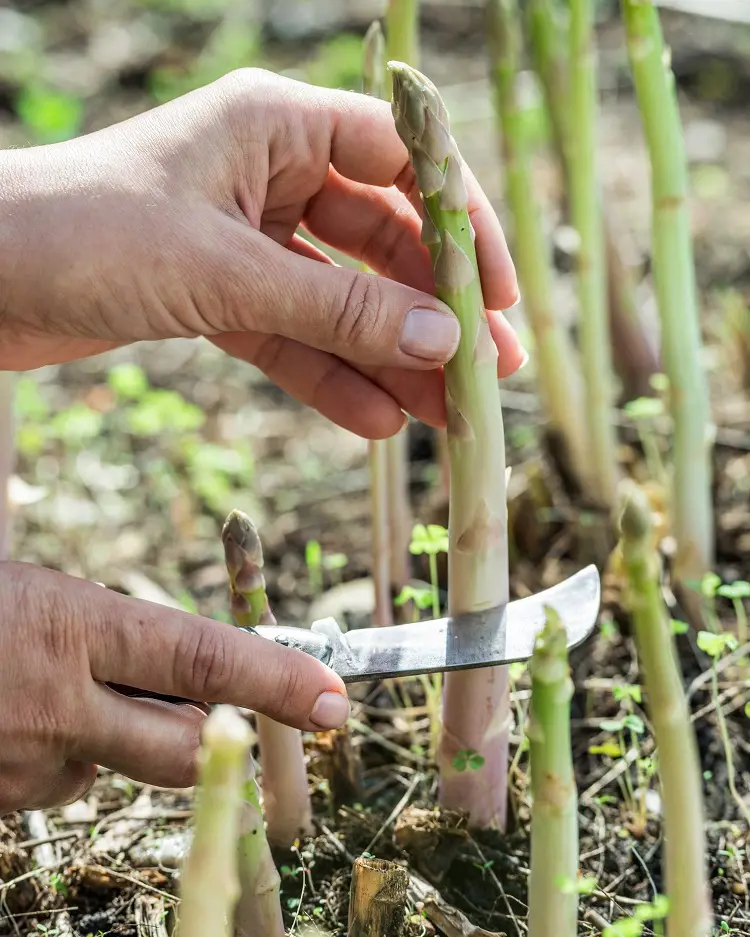
Embark on the rewarding phase of harvesting asparagus in the third year, once the spears reach a height of 6-8 inches. This patience allows the plants to establish a robust root system in the initial years.
Employ a sharp knife to cut the spears at ground level, ensuring a clean and precise harvest. By adhering to this practice, you encourage continued spear production and longevity of the asparagus bed. Selectively harvesting during the appropriate window guarantees a sustainable and bountiful yield for years to come.
13. Fall Cleanup
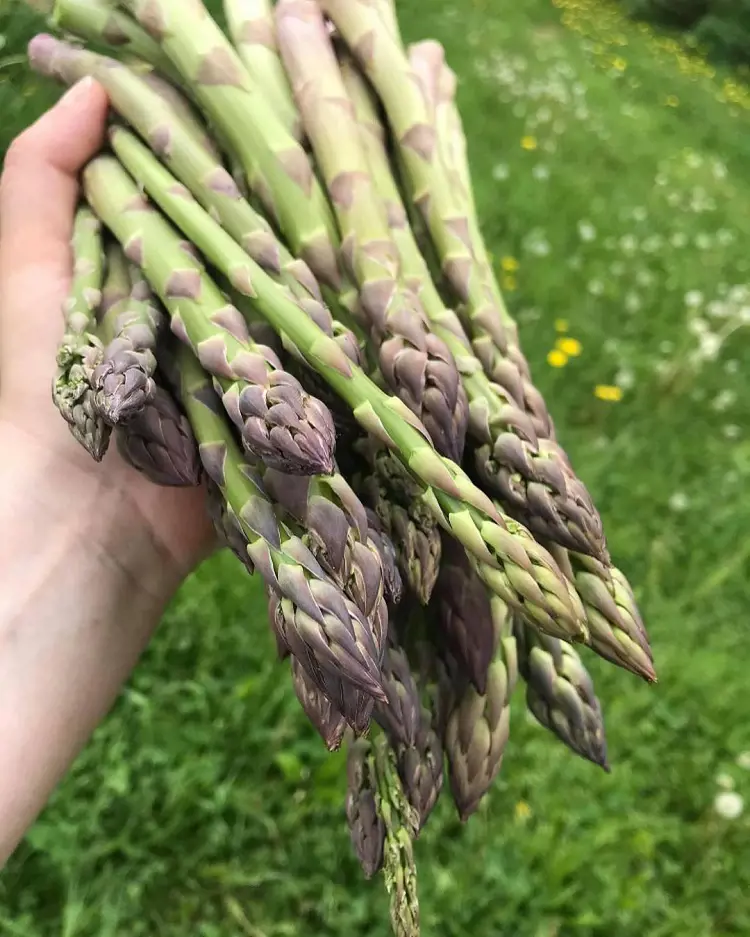
As autumn sets in, conduct a vital fall cleanup for your asparagus bed. Once the ferns have transitioned to a yellow hue, trim them back. This practice eliminates potential disease vectors and promotes a tidy garden environment.
Clear away any debris from the bed, reducing the risk of disease development and enhancing overall plant health. Fall cleanup is a proactive measure, safeguarding the asparagus plants during the dormant season and ensuring they emerge robustly in the subsequent growing season.
Final Word
In conclusion, cultivating asparagus in your backyard garden is a journey that requires patience and careful attention, but the rewards are abundant and enduring. From selecting the right variety to providing proper soil conditions, allowing for fern growth, and practicing vigilant care, every step contributes to the eventual success.
Remember, asparagus is an investment in time, with the first harvest typically arriving in the third year. However, the perennial nature of these plants ensures a continuous and plentiful supply of fresh, flavorful spears for years to come. With dedication and adherence to these guidelines, your backyard can transform into a thriving asparagus haven, providing a delicious and nutritious addition. Happy gardening!
Recent posts
How To Grow
How To Grow
How To Grow Garlic
A bulbous member of the onion family, garlic is prized for both its potent flavor and a variety of therapeutic applications. Due to its relative ease of cultivation, it is a favorite among home gardeners and a pioneer in kitchens worldwide. Garlic ma...
How To Grow
How To Plant and Grow Orchids
Orchids are one of the prettiest and most interesting flowers out there, with over 30,000 types and 200,000 hybrids. They are one of the biggest families of plants and can grow indoors or outdoors. However, growing and taking care of orchids is not e...
How To Grow
How To Plant, Grow And Harvest Corn All By Yourself
Growing your popcorn or sweet corn at home garden can seem like an interesting idea. However, it requires a large amount of space to grow as it is a tall plant that needs plenty of room to spread out. But, if you want to enjoy freshly popped po...
How To Grow
How To Plant, Grow And Care Cucumbers
Growing cucumbers is like going on a fun journey where you get to plant and pick your very own crunchy veggies. It's not just about having tasty cucumbers, it's also about the joy of seeing your plants grow. Whether you have a big garden or a small b...
How To Grow
How To Plant, Grow And Care Radishes In Your Garden
Growing radishes in your garden is a fantastic way to enjoy crisp and peppery veggies that you've nurtured from seed to plate. It's a straightforward process that anyone can try, even if you're new to gardening. In the following 12 steps, we'll guide...
How To Grow
How to Plant, Grow And Care For Spinach?
Growing leafy greens in your backyard garden is both healthy and fun. Spinach can be the best leafy green to start with as it is relatively easy to grow from scratch and can be harvested in about a month from planting. It thrives in spring or fall in...
